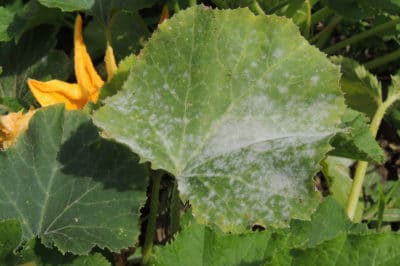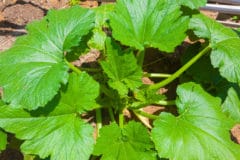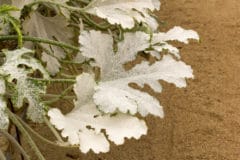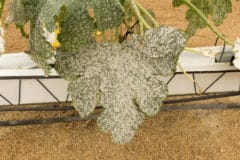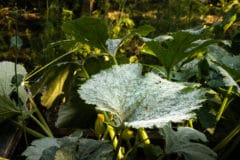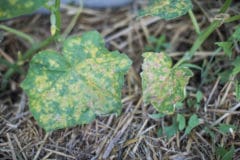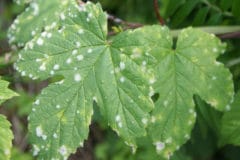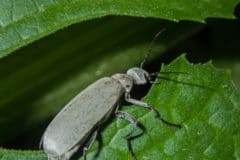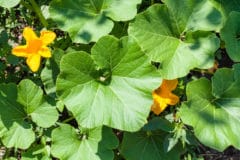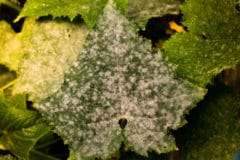Naturally Occurring White Spots
Most varieties of squash, including zucchini, develop silvery spots on their leaves as they mature. If you see these spots developing and aren’t sure if they’re problematic, take a close look at the leaves. If the discoloration does not rub off, and there’s no sign of insect damage, your plant is healthy and mature. Keep up the good work!
Powdery Mildew
Probably the most common cause of white spots on zucchini is powdery mildew. This fungus frequently attacks zucchini and other squash, and looks like a sticky white powder on the leaves. If rubbed, the powder smears, making it easy to distinguish from normal silvering. There are varieties of zucchini that are resistant to powdery mildew, including:
- Desert
- Ambassador
- Golden Glory
- Yellowfin
- Spineless Perfection
- Payload
- Endeavor
- Spineless King
- Midnight Lightning
These are typically hybrid varieties, and though they’re resistant, they’re not completely mildew-proof. If you need to treat powdery mildew infection, carefully remove and dispose of badly affected leaves. Spray the rest of the plant thoroughly with neem oil, a product safe for organic gardening and effective against pests as well as fungus.
Scarring
Insects with piercing or rasping mouthparts, like thrips, aphids, and whiteflies, feed by sucking the juices from plants’ leaves or stems. Their feeding leaves behind scars in the form of pale discoloration on your leaves. Treat for these pests with insecticidal soap, a mild, organic-friendly insecticide that is minimally toxic to beneficial insects.
Mosaic Virus
Another common cause of white or pale spots on zucchini leaves is squash or cucumber mosaic virus. Like insect damage, the virus causes scarring on the leaves in mottled patterns that continue to spread as the virus infects more cells. Unfortunately, there’s no treatment for infected plants, so it’s best to try to prevent infection in the first place.
Squash mosaic virus is spread by cucumber beetles, which can also do a great deal of damage in their own right. Avoid them by practicing crop rotation, planting later in the season, and by using row covers before your zucchini plants start flowering. If you do spot these beetles on your plants, try neem oil to keep them in check.
